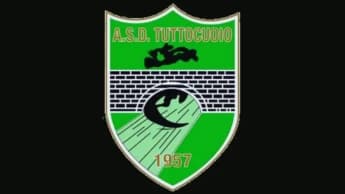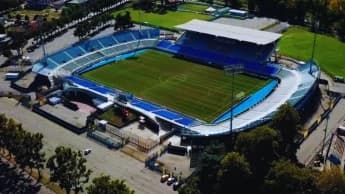From historic World Cup finals to electrifying Superclásicos, Estadio Monumental stands as a fortress of passion, tradition, and footballing greatness.
Estadio Monumental: A Symbol of Footballing Glory
Estadio Monumental, officially named Estadio Monumental “Antonio Vespucio Liberti,” is not just a stadium—it is the beating heart of Argentine football. Situated in Buenos Aires, Argentina, it serves as the hallowed home of Club Atlético River Plate, one of South America’s most prestigious and successful football clubs. With an awe-inspiring capacity of approximately 83,000, it holds the title of Argentina’s largest stadium, playing host to countless unforgettable moments in both club and international football.
Since its inauguration on May 26, 1938, Estadio Monumental has been the epicenter of Argentine football culture. It has witnessed historic clashes, including the 1978 FIFA World Cup Final, where Argentina clinched its first world championship. The stadium has also set the stage for dramatic Copa Libertadores finals, pulsating Superclásicos between River Plate and Boca Juniors, and numerous matches featuring the Argentine national team.
Beyond football, Estadio Monumental is a revered multi-purpose venue, frequently hosting massive concerts, cultural events, and even political gatherings. Legendary artists like The Rolling Stones, U2, Madonna, and Paul McCartney have performed within its walls, reinforcing its status as an entertainment landmark.
Yet its true essence lies in football. The stadium is a temple of passion, where the echoes of chanting fans create one of the most intense atmospheres in world football. The Superclásico held at the Monumental is widely regarded as one of the greatest rivalries in the sport, a spectacle that draws global attention for its sheer emotion, energy, and pageantry.
With its legendary history, striking architecture, and unparalleled ambience, Estadio Monumental remains a powerful symbol of Argentina’s deep-rooted love for football. Whether hosting club matches, international tournaments, or world-class concerts, this stadium is a living testament to the nation’s sporting and cultural heritage.
The Birth of a Giant: History and Construction
By the early 1930s, River Plate had outgrown its former home at Estadio Alvear y Tagle. With a rapidly expanding fanbase and an ambition to match its growing dominance, the club envisioned a stadium that would not only be the largest in Argentina but also one of the most grandiose in South America.
In 1934, River Plate acquired 83,950 square meters of land in the Belgrano neighbourhood of Buenos Aires, near the Río de la Plata. While the location was ideal for accommodating vast crowds, the construction posed significant financial and engineering challenges. To fund the project, River Plate secured a substantial loan from the Ministry of Public Works, supplemented by financial contributions from its devoted socios (club members).
The architectural design was entrusted to José Aslan and Héctor Ezcurra, two visionary Argentine architects who sought to create an imposing, modern stadium that would be both functional and electrifying. Drawing inspiration from European arenas but tailored to Argentina’s unique footballing culture, they designed a distinctive horseshoe-shaped structure with plans for future expansion.
Overcoming Challenges: Construction and Early Years
Construction commenced in 1935 but soon encountered difficulties due to the soft, marshy terrain near the river. To counteract this, thousands of concrete pylons were driven deep into the ground to stabilize the foundation—an engineering feat that significantly extended both the timeline and costs.
Despite the obstacles, Estadio Monumental was officially inaugurated on May 26, 1938, with a thrilling match between River Plate and Uruguayan club Peñarol. Although the stadium initially held 70,000 spectators, financial limitations meant that only three of the four planned stands were completed. The missing north stand—later known as the Sívori Stand—would be added in subsequent years.
Even in its incomplete state, the Monumental was hailed as a masterpiece. Its vast terraces, unobstructed sightlines, and ability to amplify crowd noise made it an intimidating fortress for visiting teams.
Evolution Through the Decades: Renovations and Expansions
Over the decades, Estadio Monumental has undergone multiple renovations, each reinforcing its reputation as a world-class venue.
- 1958 – Completion of the Sívori Stand: The long-awaited fourth stand was completed, fully enclosing the stadium and increasing its capacity to 90,000. This was a significant milestone in establishing the Monumental as Argentina’s premier football venue.
- 1978 – FIFA World Cup Upgrades: Extensive renovations were made in preparation for the 1978 World Cup, including the addition of a roof over the San Martín Stand, improved seating arrangements, and the installation of a state-of-the-art lighting system. The final, played on June 25, 1978, saw Argentina defeat the Netherlands 3-1 in one of the most historic moments in the stadium’s history.
- 1986–1990s – Modernization Efforts: Following FIFA’s evolving safety regulations, the stadium gradually transitioned from standing terraces to seating areas, slightly reducing capacity but significantly improving comfort.
- 2000s – Technological Advancements: The stadium adapted to modern football demands by introducing giant LED screens, enhanced security measures, and upgraded locker room facilities.
- 2020–2023 – The Most Ambitious Renovation Yet: River Plate embarked on a groundbreaking project to transform the Monumental into South America’s most advanced stadium. The improvements included expanded seating, a state-of-the-art playing surface, and updated hospitality areas, further cementing its place as a world-class venue.
Today, Estadio Monumental is not just River Plate’s stronghold—it is an enduring symbol of Argentina’s unwavering football passion.
A Fortress of Football: Architecture and Design
Estadio Monumental is an architectural marvel, purposefully designed to maximize crowd engagement and intensity.
- Elliptical Shape: The curved structure ensures optimal sightlines, providing an immersive experience for every spectator.
- Intimidating Stands: The steeply rising Sívori, Centenario, San Martín, and Belgrano stand to create a near-vertical wall of fans, making the stadium feel incredibly intimate despite its vast size.
- Iconic Tunnel: Unlike traditional walkways, players ascend an inclined ramp from the dressing rooms, heightening the psychological drama before kickoff.
- Removal of the Running Track: Initially designed for athletics, the running track was removed in 2020, bringing fans closer to the pitch and amplifying the intimidating atmosphere.
With each upgrade, the Monumental continues to honor its legacy while embracing the future of football.
An Electrifying Experience: The Atmosphere and Fan Culture
For football fans, attending a match at Estadio Monumental is a once-in-a-lifetime experience. The passion of River Plate supporters—known as Los Borrachos del Tablón—creates a spectacle unmatched anywhere in the world.
- Superclásico Magic: When Boca Juniors visits, the stadium transforms into a battleground of sound and emotion, delivering an atmosphere that is nothing short of legendary.
- Pre-Match Rituals: From flares and fireworks to the spine-tingling club anthem sung in unison, the energy inside the Monumental is electrifying.
- Unwavering Support: River Plate fans never stop singing, drumming, and waving flags, making every match a breathtaking experience.
Whether it’s a historic title decider or a routine league fixture, the Monumental’s atmosphere is a testament to the undying love Argentina has for football.
A Monument to Footballing Greatness
Estadio Monumental is more than just a stadium—it is a living monument to football history. From Maradona lifting the 1986 World Cup trophy to River Plate’s unforgettable triumphs, its walls have witnessed the pinnacle of the sport.
With every match, every goal, and every roar from the stands, the Monumental reaffirms its place as one of the most revered stadiums in the world—a true cathedral of football.





